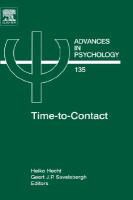Read more
Zusammenfassung Divided into four sections, this book covers the foundation of time-to-contact in section one. Section two covers different behavioral approaches to time-to-contact estimation, section three focuses on time-to-contact as perception and strategy, and section four covers time-to-contact and action regulation. Inhaltsverzeichnis Introduction: Theories of Time-to-Contact Judgment. The Biological Bases of Time-to-Collision Computation. Building Blocks for Time-to-Contact Estimation by the Brain. Predicting Motion: A Psychophysical Study. Collisions: Getting Them Under Control. Optical Information for Collision Detection During Deceleration. Interceptive Action: What's Time-to-Contact got to do with it? The Information-Based Control of Interceptive Timing: A Developmental Perspective. A Step by Step Approach to Research on Time-to-Contact and Time-to-Passage. Multiple Sources of Information Influence Time-to-Contact Judgments: Do Heuristics Accommodate Limits in Sensory and Cognitive Processes? How Now, Broad Tau? Interception of Projectiles, from When and Where to Where Once. Acoustic Information for Timing. Why Tau is Probably not Used to Guide Reaches. The Use of Time-to-Contact Information for the Initiation of Hand Closure in Natural Prehension. Another Timing Variable Composed of State Variables: Phase Perception and Phase Driven Oscillators. The Fallacy of Time-to-Contact Perception in the Regulation of Catching and Hitting. Locomotion and TTC: How Time-to-Contact is Involved in the Regulation of Goal-Directed Locomotion.

